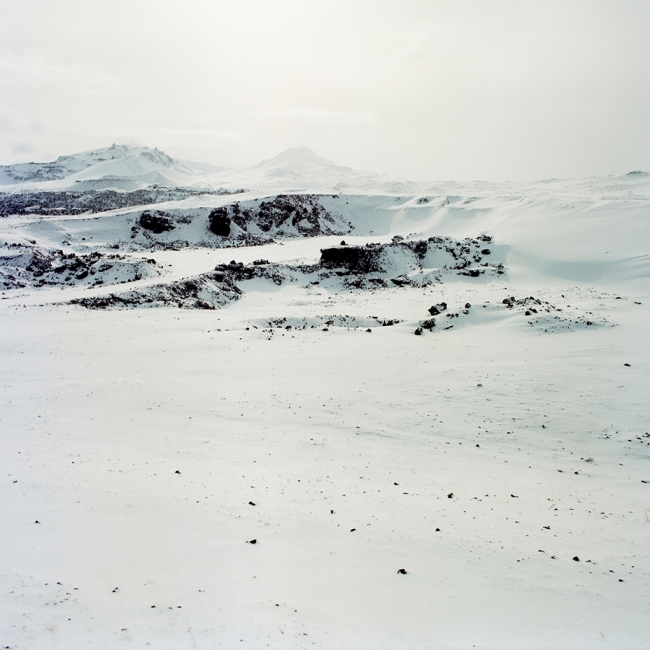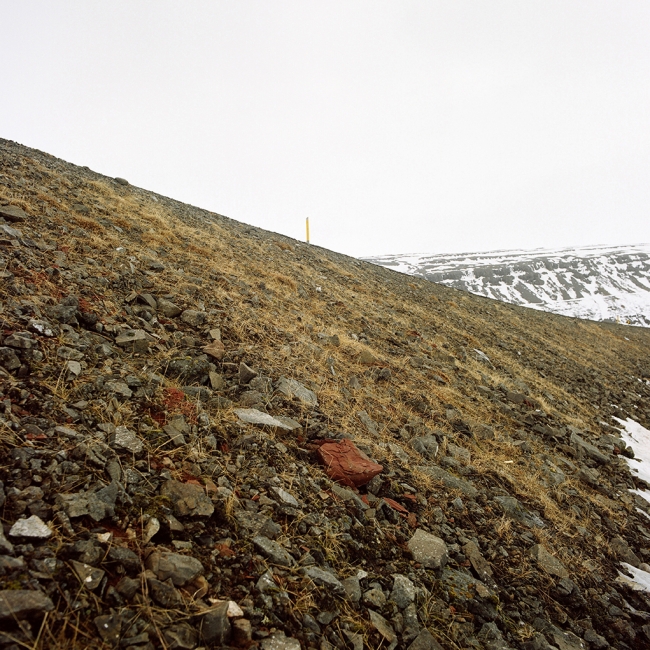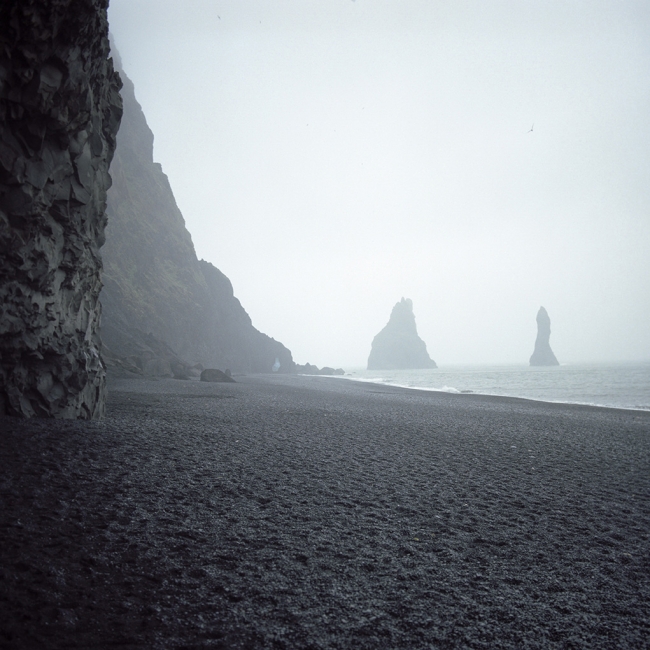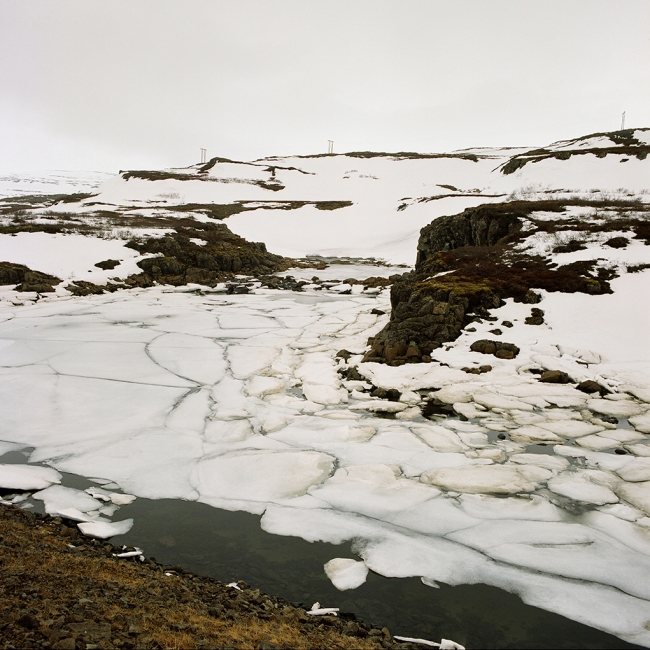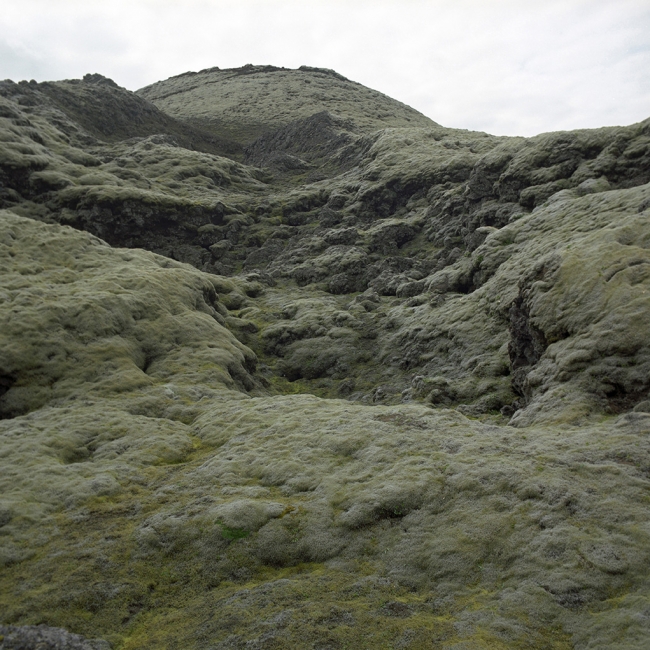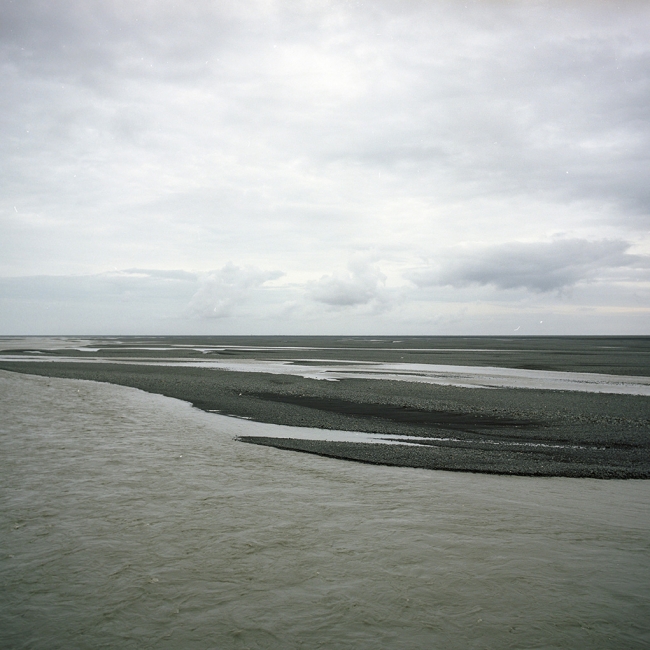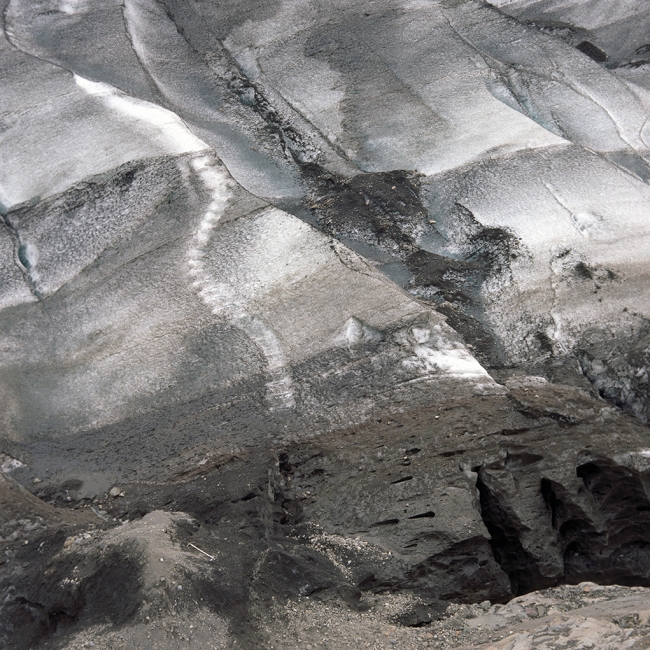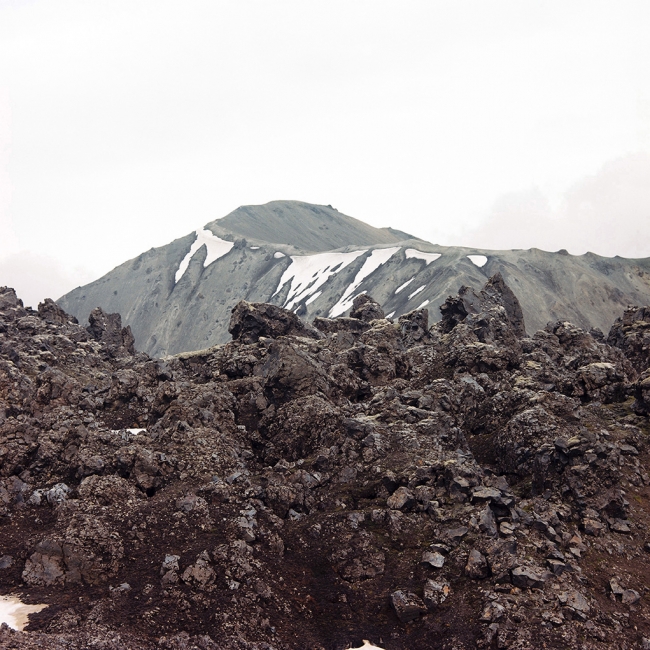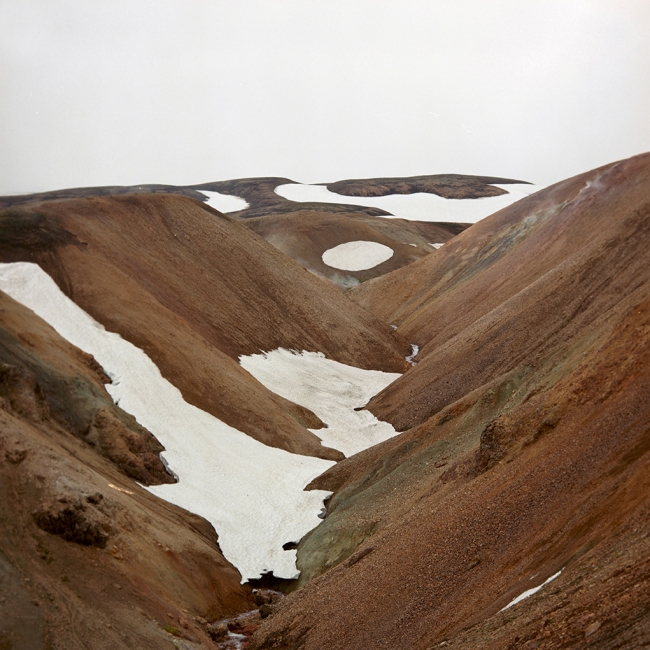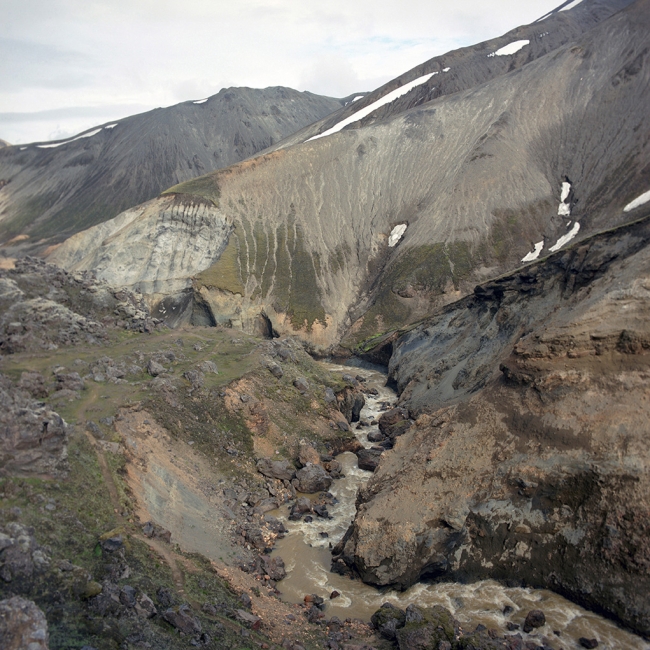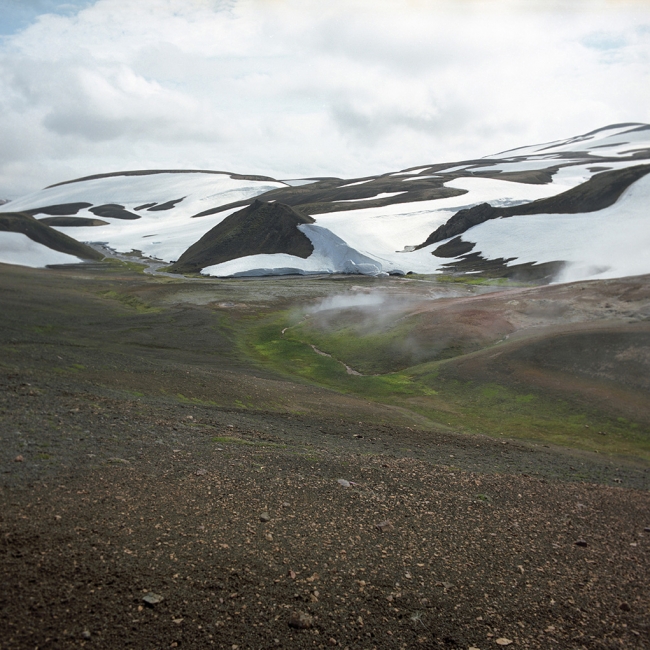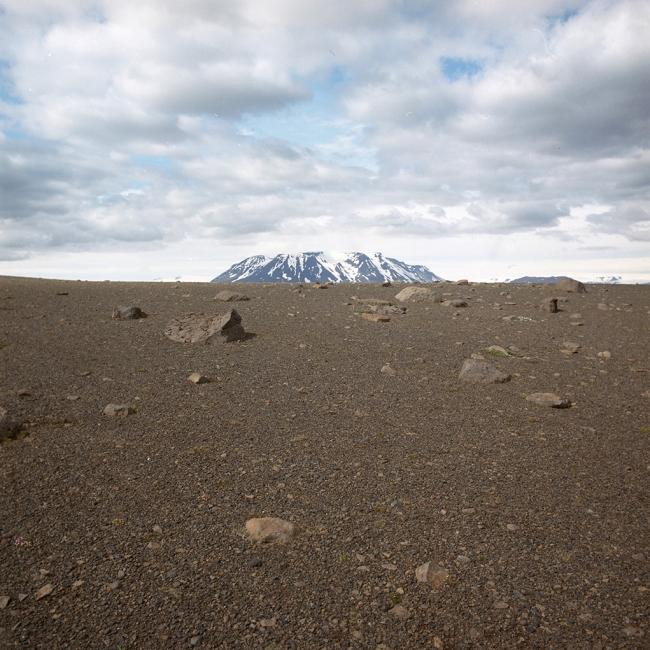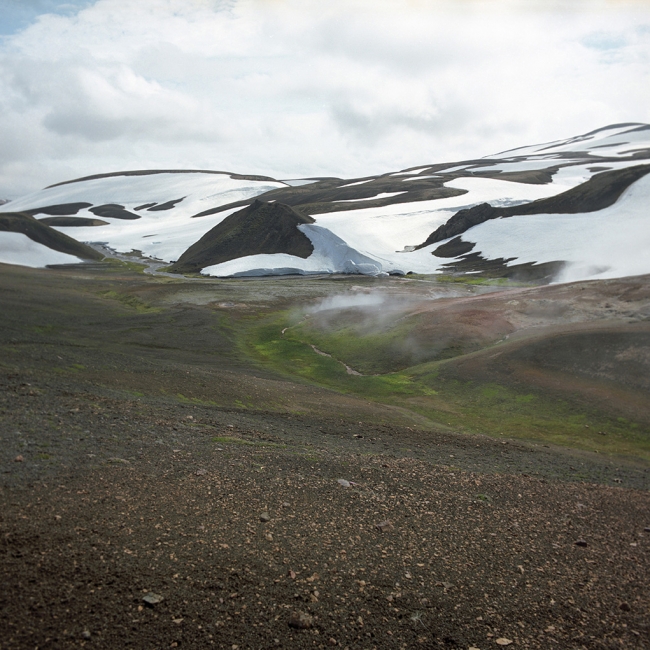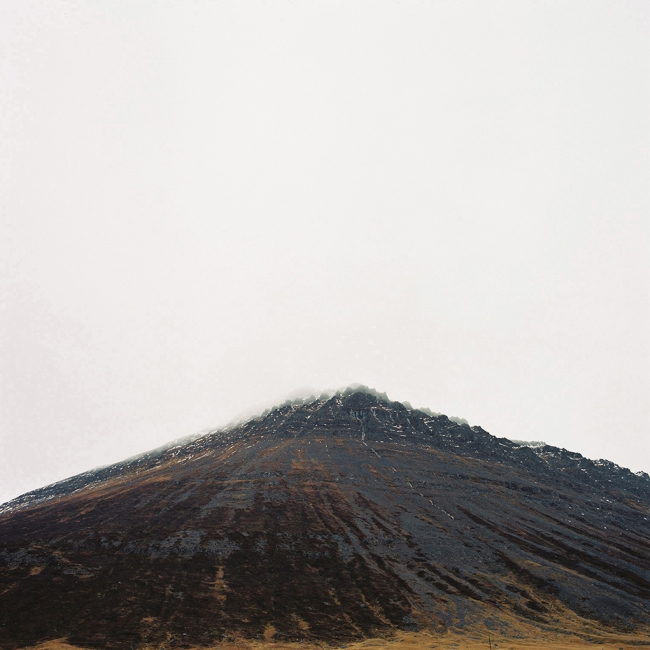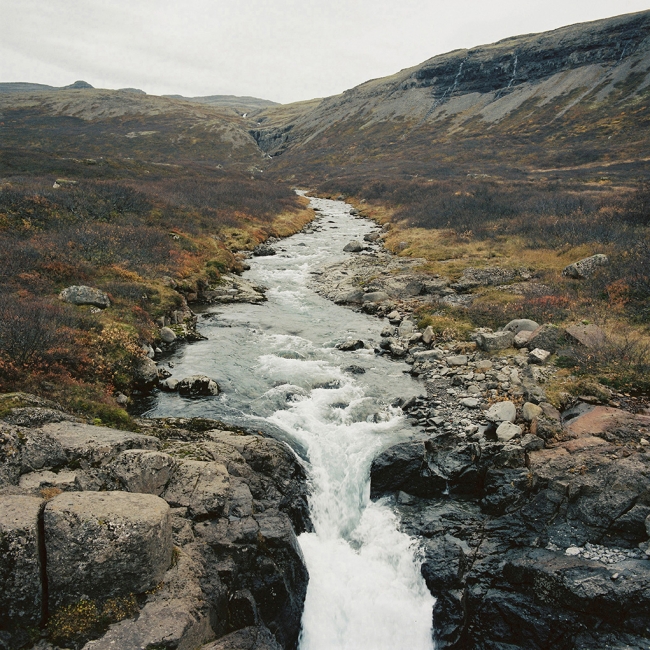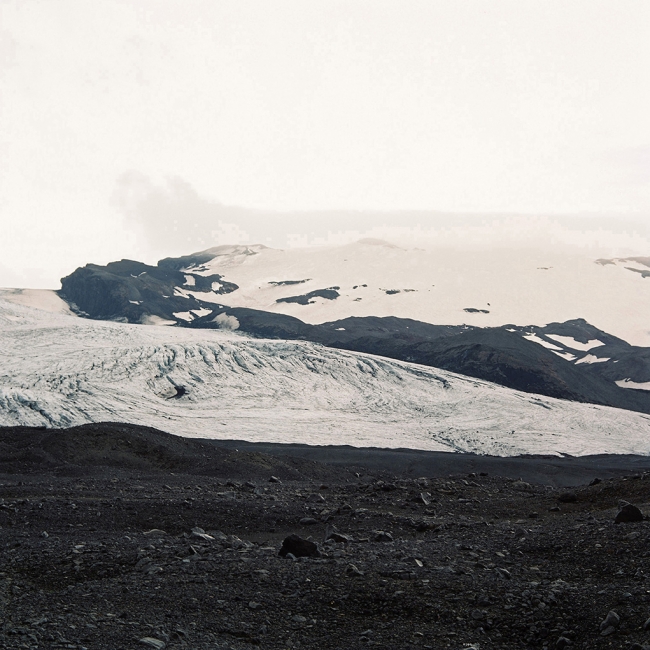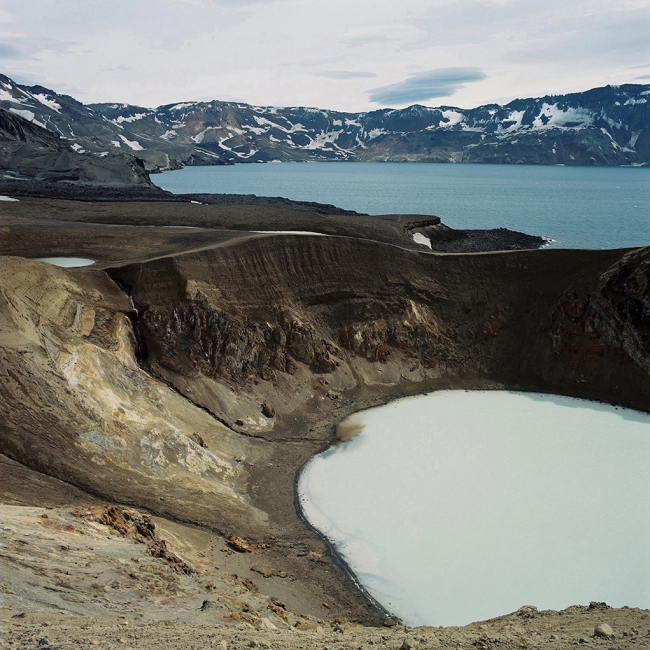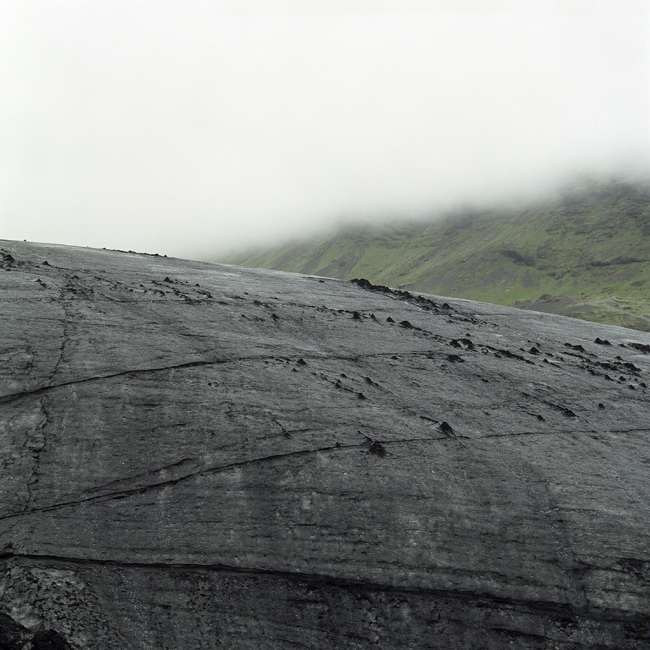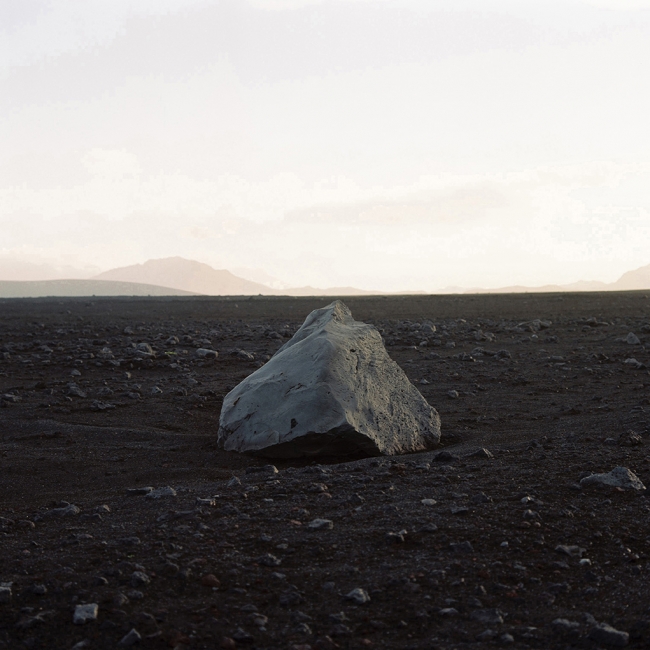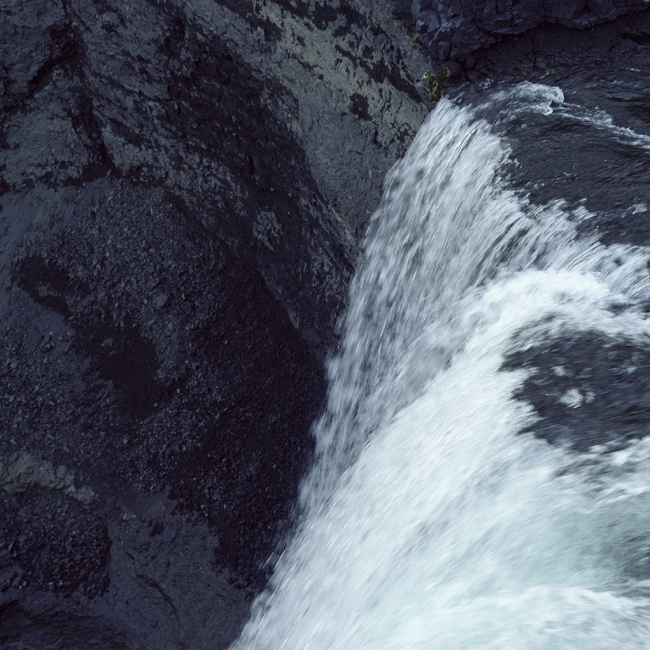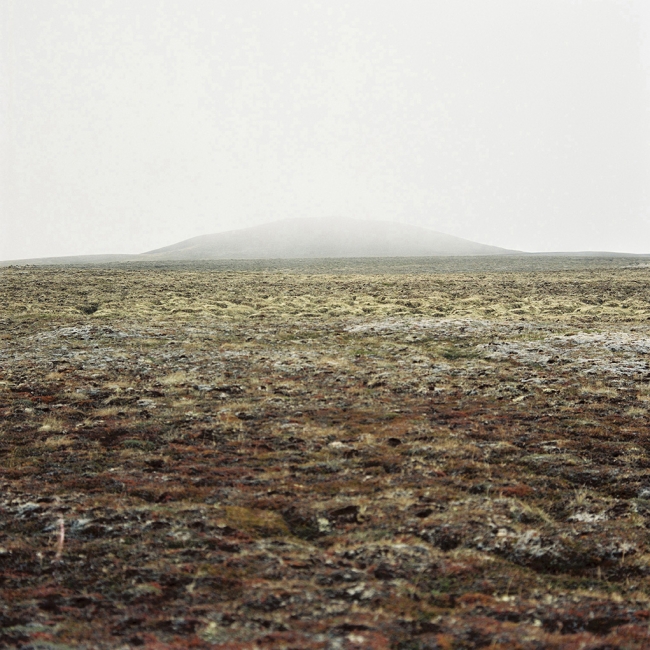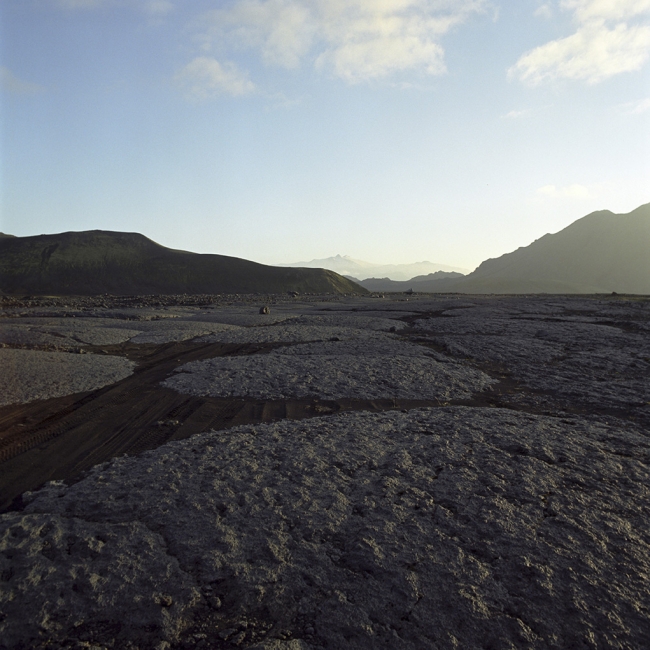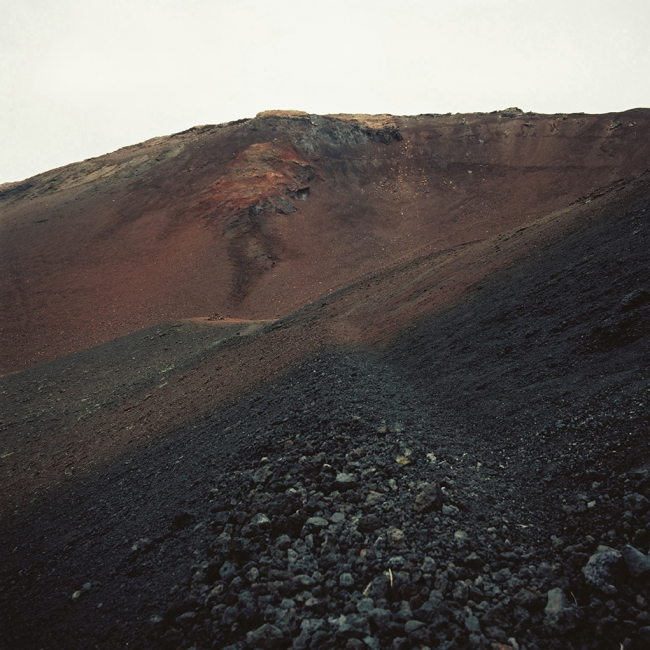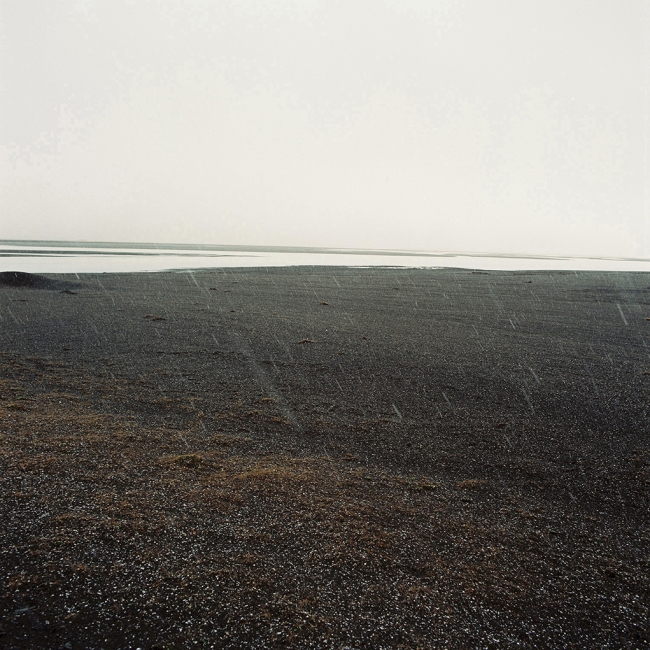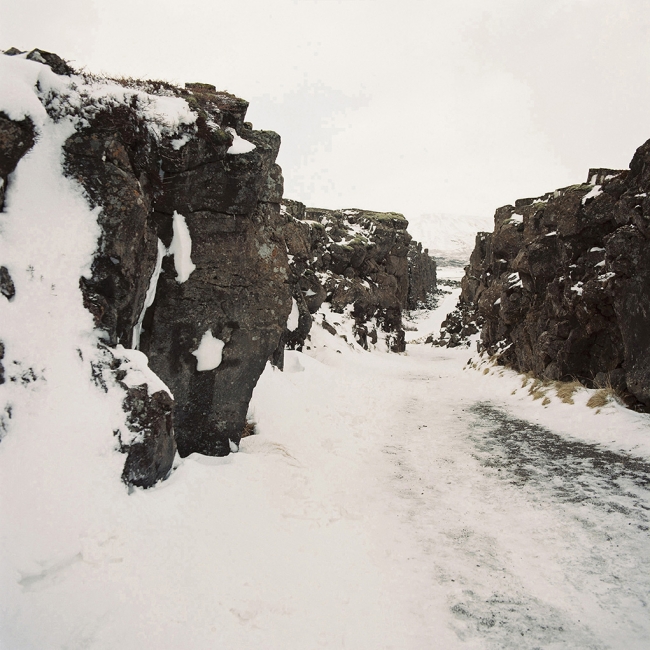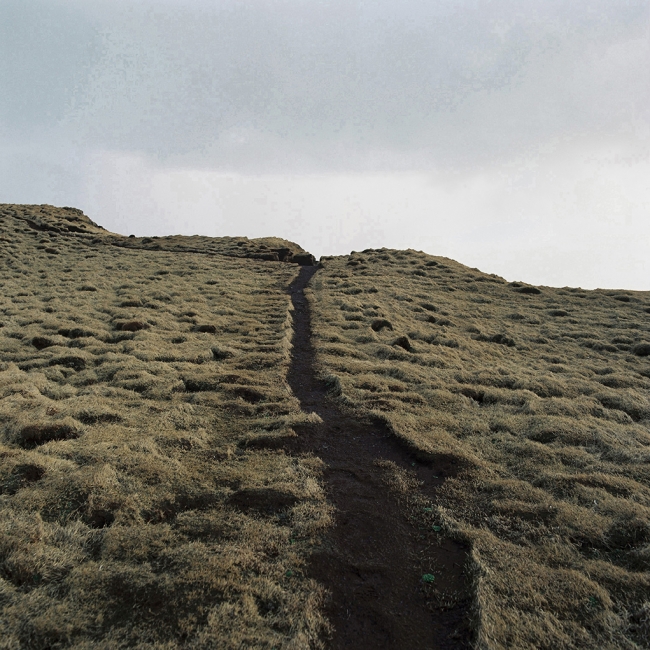Iceland’s landscapes are renowned for their sublime character, widely praised in adventure and tourism books. Like many travellers, I felt the same way. Their presence, like their power, awakens us brutally, disproportionately, because this force goes beyond what we can imagine. There is no attraction to the ‘beautiful’ landscape, but a gentle hostility to the elements that becomes inspiring. I avoid panoramic vision and concentrate the landscape in a square. I linger on small landscapes, spaces of almost nothing, details, outcrops, materials, colours, meteoric phenomena, silences and crashes.
The uncertainty and doubt into which some of the images plunge us is linked to the loss of reference points and scale, to the appearance of strange colours – dark, earthy, dull, bright or pastel – and to the vaporous effects that cloud our perception of the earth and the fragility of the soil, sometimes hard, sometimes crumbly, soft or muddy.
His images can emanate a sense of melancholy that I believe is contained in the land itself, in its elemental, telluric nature.
During my walks, I fix my gaze not just on the horizon but on tiny, intimate fragments of the landscape, where my feet sink or stumble, where micro-territories are revealed micro-territories on the edge of the visible, unless you are face down.
Because I keep my gaze close to the ground and the edges, confronted with a loss of scale that makes the visible sensitive in a different way. Here, more than anywhere else, scale and reference points no longer have any place, leading to wandering. We move forward in one direction, while our gaze calls us elsewhere.
Accidents in the earth’s crust create viewpoints that disrupt any notion of perspective.
Just as a walker’s step wavers and becomes hesitant, so the viewer’s gaze, in turn, searches the image for points of support, but the gaze keeps slipping away… always.

